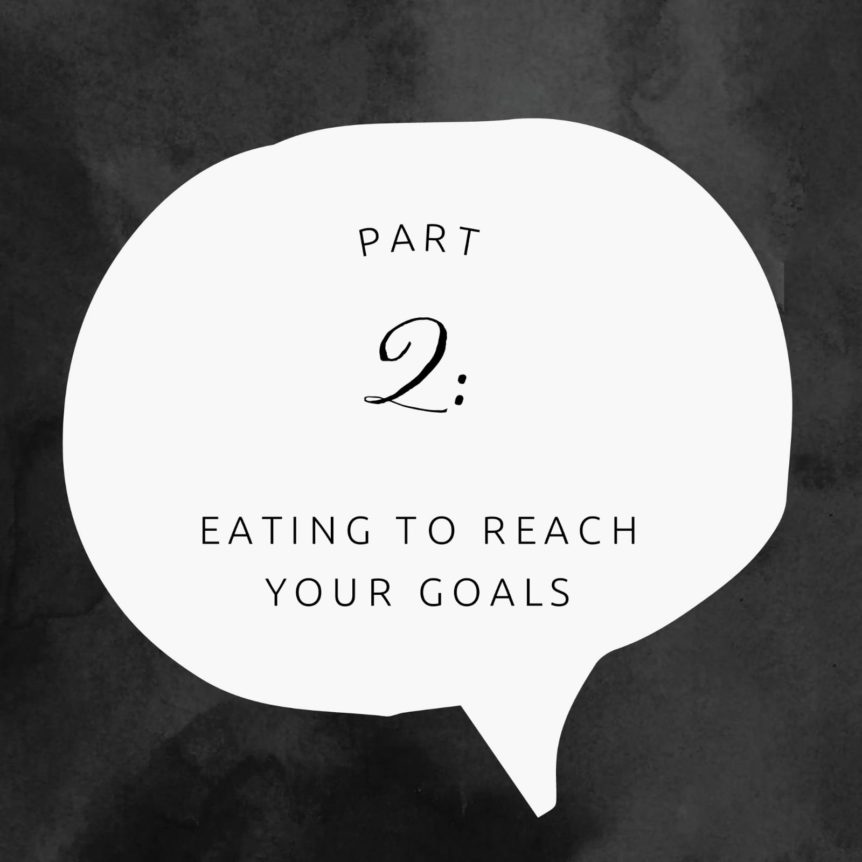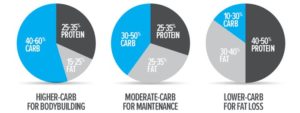| Are you being realistic with your weight loss goals?
Some people start a diet/cut and get some pretty fabulous results right away. They drop a bunch of weight in the first few weeks and are highly motivated to keep going. This is fantastic. However, the rate at which you lose weight will not always be so quick or drastic. When people clean up their diet they normally notice a drop in weight which can be equated to “water weight”. No matter what though you need to remember that weight loss isn’t always consistent. It might not be realistic to expect to lose 1 pound a week. People often say you just need to reduce your food intake by 3500 calories every week to lose a pound. This is great in theory but some people will still struggle to lose a pound and this is okay! Weight loss is weight loss. Losing 0.5 pounds a week or every two weeks is still weight loss and nothing to frown at. I’ve said it before and I’ll say it again, your body is incredible! Its always adapting and trying to become as efficient as possible. This is why sometimes your weight loss slows down to a crawl. Your body will adapt to lower calories and still continue to function. |
| How long does it take to see change?
You need to approach weight loss with the long term in mind. You cannot go into a cut/diet and think I’ll be able to lose 10 pounds by June and be ready for the beach. This is another reason why I personally think a weight loss goal can be super detrimental to your progress. What if you’ve lost fat, built muscle, lost inches and developed a healthier relationship with food but the scale only says you lost 4 pounds. Does that mean you didn’t succeed? Long term change and weight loss takes time! I’ve been at this for 2 ½ years. I’ve consistently trained 5+ days a week over that time, I’ve meal prepped, learnt about macros and what foods work for me and shifted my mindset to health and strength from weight loss. I weight 8-12 pounds more than when I started my journey but have lowered by body fat from 35% to about 20-22% on average. This is a weight that I’m comfortable at. It allows me to include a ton of food, some treats and do minimal cardio beyond health reasons. Change does not happen overnight! Anyone who says otherwise is trying to sell you a quick fix. Instead of thinking in terms of 4, 6, or 12 weeks think long term. Think about what changes you can consistently make to see and maintain progress over the course of a year! I know this may seem super foreign or unrealistic for a lot of people, but it is the healthiest way to approach weight loss. So while your progress may slow down appear to plateau stick to eating, living and training in a way that will get you closer to your goals. Patience and longevity are the key! |
| I can’t possible keep this up for a year!
If you’ve already began your weight loss journey, you know, you started working out and eating right. How long do you plan on doing this for? Does this journey have an expiration date? Does the way you’re working out and eating feel unbearable? Are you counting down the days till you’re “done”? If you said yes to any of these things I can guarantee you aren’t going to keep your progress or that weight off. If you can’t keep up what you’re doing now, then it isn’t sustainable. It isn’t all about cardio and calories. It is about the lifestyle and the decisions you make daily. Doing some or all of these things is a great way to start: -taking the stairs when you can -walking instead of driving -one less adult drink than usual -a quick home-made meal instead of take out every time -eliminating snacking while watching tv -having a slice of pizza instead of a whole pizza -get your emotional/boredom eating in check -exercise or get active in a way you enjoy -surround yourself with likeminded people -stop making unhealthy food convenient to eat at home -stop trying the latest fad diet. Find a way you enjoy eating and stick to it! |
I’m having a hard time consuming enough calories?
|
| Macro splits
I get a lot of people asking, “What’s your macros split, Nikki?” I consistently refuse to share this information because:
I’ve done a lot of different splits over the last two years. When I first started I had a coach who “customized” my macros. He had me start at 93 grams of carbs or 20-23% carbs. I don’t recommend this for most people or long term. I never had a say in the split he gave me and it certainly didn’t take any of my preferences into consideration. I had a girlfriend who also used him and had the exact same split. Despite this, our results were naturally different. This is why finding a split that works for you is key. After this I managed all my own macros. I increased my carbs to 40-45% and was able to maintain a physique relatively the same as when I was limited to 20-23%. The fear of carbs can be real for so many people but we really benefit from them. Carbs also include so many healthy and delicious things like fruits and vegetables that provide us with really important micro nutrients. |
| So, what split should you try?
Image from bodybuilding.com I have in fact tried all of these splits and had great success with them all. However, as you can see they all have a range. Fine tuning that range is where trial and error come into play. This is why asking what someone else does won’t necessarily help you. You really need to try something for yourself to see if it works. I generally recommend trying a new set of macros for two or even three weeks before switching. Macro Preferences I personally take into consideration my preferences. I love healthy fats! Avocado and nut butter are my jam! For this reason, allotting more of my macros to fats than carbs is something that I have found works well for me. I can easily stick to my macros/calories when I can include foods I love. I personally have never gone below 20% fat and don’t feel the need to experiment with going lower. A split might not be right for you if: · You notice a negative change in your body composition right away · You feel tired all the time · Your goal was fat loss and you’re gaining · Your goal was muscle gains and despite training they aren’t happening Protein I generally set my protein around 30-35% because I find I can maintain my muscle and build muscle in the range. For me this works out to be around 1 gram of protein per pound of body weight. This might seem high but I’d rather aim for this because often times we actually fall short on our protein consumption anyways. I’d rather fall short and consume 120 grams of protein than aim for 120 grams and only consume 80 grams. I find I’m the most content and satiated when I consume enough healthy fats and lean protein. These two macros keep me feeling full for longer periods of time. Carbs on the other hands help me keep my training up and improve my recovery. Every macronutrient is important but it may take a bit of time to find the right split for you. At the end of the day though, making sure you are eating the right number of calories should get priority. A calorie deficit is necessary for weight loss no matter your macros, just like a surplus of calories is essential for gains. |
Calculate your macro split/numbers using what you’ve learned in these two first emails by using the videos/information below.
Start with this video below:
https://justget.fit/how-many-calories-should-you-be-eating/
After watching the video in the link above, you’ll have everything you need to calculate your macros using the link below.
| In order to make everything more digestible and not overwhelm you I’m splitting up this information into a couple newsletters.
The newsletter will talk about: · Weight loss plateaus · How to track what you’re eating without counting calories or macros · What to do when you don’t want to decrease your calories during a diet
The following newsletter will talk about: · I’m exercising lots and not seeing progress · “No, no, I swear my metabolism is slow” · What’s a reverse diet · How to do a reverse diet These tips are absolutely not intended for anyone struggling with any kind of eating disorder or chronic diseases. If you’re struggling with any of these seeking a medical professional is extremely important. |



Comments 3
Pingback: Part 3: I’m Eating Healthy but I’m Not Losing Weight | Just Get Fit
Hi Nikki!
I am excited to try this meal prepping / macro counting thing out with you! Quick question though… I have been given a calorie budget of 1440 cal/day from a personal trainer… However, following your calculations for my moderate activity level @189 lb’s w/BMI 1627.55 – my caloric intake per day was calculated at 2093.7 cal/day if I wanted to go for a 17% calorie deficit (to lose weight). My question is… What is your opinion in why this personal trainer’s calculations be so drastically low? I hope you see my confusion… it’s like I dont know who to follow… I am looking for clarity and your opinion. I am going to try out possibly both to see… with your 2-3 week suggestion. But I want to do the best route to maintain the weight loss- NOT a quick fix. I hope you can help 🙂 Thanks in advance!
Author
Hey there,
The problem with calculating your macros based just on height, age, body weight etc and not body fat % is, is that a weight of 189 pounds can lead to higher calorie suggestions. I have been 150+ pounds in the past but had over 35% bodyfat. What I needed to lose weight then vs now at 150pounds and 20-23% body fat is very different. If I ate the number of calories I do now, in the past, I certainly would have gained weight. This is why I suggest following my recommendations from the first part of the email series and deduct 17% of the calories you were eating before you were put on a plan. This is not to say your coach is wrong, I’ve never met you in person and don’t know your calories/eatinf history. When I do nutrional coaching I never give a client macros/calories until I’ve seen what they eat for a week. It doesn’t make sense to give someone 1500 calories if they tell were eating 2300 before. Instead I would slowly reduce their calories as little as possible to promote weight loss with as small a deficit as possible. This way we can continue to reduce the calories slowly. This usually makes weight loss slower but easier to maintain. All of this is in part of the email series from last week 🙂 hope that helps.